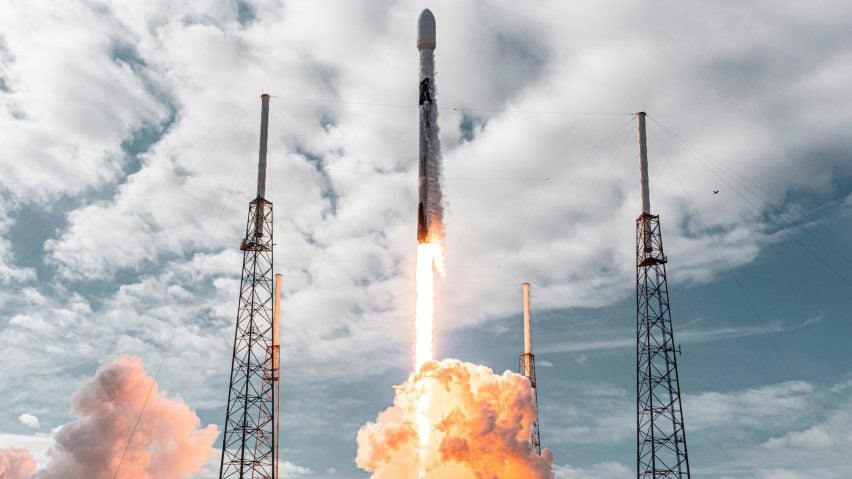A rocket by Elon Musk's SpaceX carried an unprecedented number of satellites into space on Sunday, setting a new record for the most spacecraft that have ever been deployed in one mission.
Dubbed Transporter-1, the mission carried 143 spacecraft into Earth's orbit including compact nano- and microsatellites from a range of different countries and corporations.
This beats the previous record of 104 satellites, which were launched during a mission by the Indian Space Research Organisation (ISRO) in 2017.
SpaceX's rocket launched from the Cape Canaveral Space Force Station in Florida at 10 o'clock in the morning, marking the first dedicated mission of the company's SmallSat Rideshare Program.
As the name suggests, the initiative resembles a kind of UberPool for satellites, allowing different operators to hitch a ride into space on the same rocket and split the cost, rather than having to invest upwards of $60 million to charter an individual rocket.
Under the SmallSat Rideshare Program, it costs only $1 million to send a 200-kilogram spacecraft into sun-synchronous orbit (SSO), which houses imaging, military and weather satellites.
SpaceX aims to serve this orbit via a regular service every four months, in a bid to provide "increased access to space for small satellite operators seeking a reliable, affordable ride to orbit".
Rocket designed to be reused
The relative affordability of the programme is also linked to the design of SpaceX's Falcon 9 rocket, which was used for the mission and was developed to be partially reused.
The most expensive part of the rocket – the first-stage booster which propels it off the ground and falls away once it has served its purpose – is able to land on one of the company's ocean-bound droneships and can subsequently be used for other missions to bring down the astronomical cost of rocket launches.
Falcon 9 launches 143 spacecraft to orbit — the most ever deployed on a single mission — completing SpaceX’s first dedicated SmallSat Rideshare Program mission pic.twitter.com/CJSUvKWeb4
— SpaceX (@SpaceX) January 25, 2021
The first-stage booster used in the Transporter-1 mission, for example, was previously used in four other missions including for SpaceX's Starlink programme, which is seeing a constellation of thousands of satellites set up in Earth's orbit to provide high-speed internet access across the world.
Number of satellites set to quintuple in the next decade
Aboard the Transporter-1 mission were spacecraft from research organisations such as NASA and the University of South Florida Insitute of Applied Engineering, alongside eight communications satellites by Canadian company Kepler and 48 shoebox-sized Earth imaging satellites by San Francisco-based Planet Labs.
Also launched as part of the mission were ten of SpaceX's own Starlink satellites – the first in the constellation to be deployed into polar orbit, where they will traverse the Earth from north to south.
This comes shortly after another Starlink mission saw 60 satellites sent into orbit on January 20, as part of the company's aim of establishing a mega-constellation of at least 12,000 satellites by the middle of the decade.
With the advent of smaller, more affordable satellites, and ridesharing programmes like that of SpaceX or the Vega programme by European company Arianespace, the number of satellites in Earth's orbit is set to quintuple in the next decade.
This has raised concerns about light pollution among astronomers as well as increasing the risk of collisions and eventually adding to the estimated 6,000 tons of space waste that are already floating in low Earth orbit – including 2,550 of our planet's 5,850 satellites.
In a bid to tackle this space waste, Kyoto University recently announced that it was developing the world's first wooden satellite in collaboration with Sumitomo Forestry, which would burn up completely at the end of its life.

